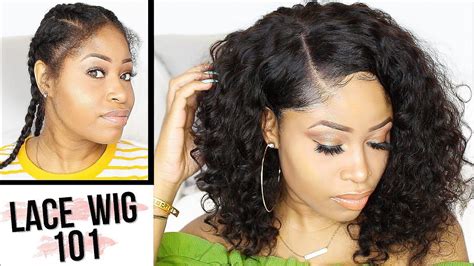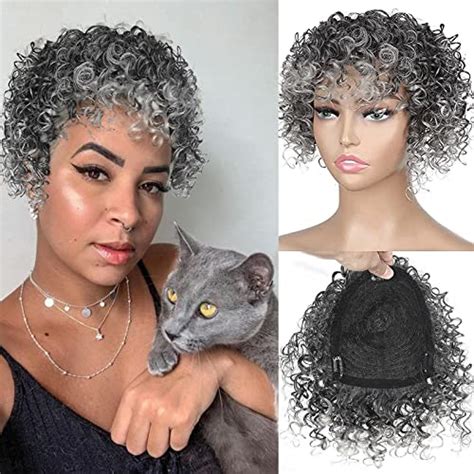African American Hair Topper for Thinning Crown
Are you an African American woman struggling with thinning hair or a receding hairline? Don’t worry; you’re not alone. According to the American Hair Loss Association, over 50% of African American women experience some form of hair loss by the age of 50.

What is a Hair Topper?
A hair topper is a non-surgical hair replacement solution that can help conceal hair loss and add volume to your hair. Hair toppers are made from real or synthetic hair and are available in a variety of colors, textures, and lengths.
Benefits of Hair Toppers for Thinning Crown
There are many benefits to using a hair topper for thinning crown, including:
- Conceals hair loss: Hair toppers can help you conceal hair loss and create the illusion of a fuller head of hair.
- Adds volume: Hair toppers can add volume to your hair, making it look thicker and healthier.
- Easy to use: Hair toppers are easy to apply and remove, and they can be styled just like your own hair.
- Affordable: Hair toppers are a more affordable option than other hair replacement solutions, such as wigs or hair transplants.
How to Choose the Right Hair Topper
When choosing a hair topper, it’s important to consider the following factors:
- Hair type: Choose a hair topper that matches your own hair type. If you have curly hair, choose a curly hair topper. If you have straight hair, choose a straight hair topper.
- Hair color: Choose a hair topper that matches your own hair color. If you’re not sure what your hair color is, you can consult with a hair stylist.
- Hair length: Choose a hair topper that is the same length as your own hair. If you’re not sure what length to choose, you can consult with a hair stylist.
- Hair density: Choose a hair topper that has the same density as your own hair. If you have thin hair, choose a hair topper with a light density. If you have thick hair, choose a hair topper with a heavy density.
How to Apply a Hair Topper
Applying a hair topper is easy. Simply follow these steps:
- Brush your hair to remove any tangles.
- Part your hair where you want to apply the hair topper.
- Clip the hair topper into place.
- Style your hair as desired.
How to Care for Your Hair Topper
To keep your hair topper looking its best, be sure to follow these care instructions:
- Wash your hair topper regularly: Wash your hair topper every 2-3 weeks with a mild shampoo and conditioner.
- Condition your hair topper: Condition your hair topper every 1-2 weeks with a leave-in conditioner.
- Avoid heat styling: Heat styling can damage your hair topper. If you must use heat styling, use a low heat setting and apply a heat protectant spray to your hair topper.
- Store your hair topper properly: When you’re not wearing your hair topper, store it in a cool, dry place.
Common Mistakes to Avoid
When using a hair topper, it’s important to avoid the following common mistakes:
- Choosing the wrong hair topper: Choosing the wrong hair topper can make your hair loss more noticeable. Be sure to choose a hair topper that matches your own hair type, color, length, and density.
- Applying the hair topper incorrectly: Applying the hair topper incorrectly can make it look unnatural. Be sure to follow the application instructions carefully.
- Over-styling your hair topper: Over-styling your hair topper can damage it. Avoid using harsh chemicals or heat styling products on your hair topper.
- Not caring for your hair topper properly: Not caring for your hair topper properly can shorten its lifespan. Be sure to wash, condition, and store your hair topper according to the care instructions.
Pros and Cons of Hair Toppers
Pros:
- Conceals hair loss
- Adds volume
- Easy to use
- Affordable
Cons:
- Can be uncomfortable to wear for long periods of time
- Requires maintenance
- Can be difficult to find a good match for your hair
Conclusion
If you’re an African American woman struggling with thinning hair or a receding hairline, a hair topper may be a good solution for you. Hair toppers are easy to use, affordable, and can help you conceal hair loss and add volume to your hair.
Additional Resources
Tables
| Hair Topper Type | Description | Benefits | Drawbacks |
|---|---|---|---|
| Synthetic | Made from synthetic fibers | Less expensive, more durable | Less natural-looking, can be uncomfortable to wear |
| Human hair | Made from human hair | More natural-looking, more comfortable to wear | More expensive, less durable |
| Hair Topper Base Type | Description | Benefits | Drawbacks |
|---|---|---|---|
| Lace | Made from a thin, transparent material | Invisible when applied correctly, allows for natural movement | Can be delicate and tear easily |
| Monofilament | Made from a single layer of nylon or polyester | Durable, breathable | Can be less natural-looking than lace |
| Polyurethane | Made from a thin, flexible material | Durable, waterproof | Can be less breathable than lace or monofilament |
| Hair Topper Attachment Method | Description | Benefits | Drawbacks |
|---|---|---|---|
| Clip-in | Clips into your own hair | Easy to apply and remove, can be reused | Can be uncomfortable to wear for long periods of time |
| Tape-in | Tapes into your own hair | More secure than clip-in hair toppers, less visible | Can damage your own hair if not applied correctly |
| Glue-in | Glues into your own hair | Most secure attachment method, can last for several weeks | Can be difficult to remove, can damage your own hair |
| Hair Topper Density | Description | Benefits | Drawbacks |
|---|---|---|---|
| Light | Less hair per square inch | More natural-looking, more breathable | Less volume |
| Medium | More hair per square inch | More volume, more fullness | Less natural-looking, less breathable |
| Heavy | Most hair per square inch | Most volume, most fullness | Least natural-looking, least breathable |
